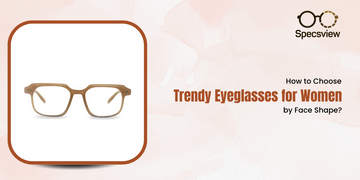It may feel like a sharp pain, or it could be aching. The pain may occur in either one or both eye. You can also describe the pain by describing where it is, such as behind your eye.
The pain you experience when you get a dirt particle or an eyelash stuck in your eye is not the same as a simple irritation. Eye pain goes beyond the eyestrain you may feel from staring at your computer for hours. If you have a lash or dirt in your eye, it will feel better if the eye is cleaned or if your eyes are rested by using a cool compress or closing your eyes.

Eye pain can be severe, lasting longer, and occur with other symptoms. Eye pain may be an indication of an underlying injury or health issue. If you experience new eye pain, or if the pain continues to worsen, you should consult a doctor as soon as possible.
Who is more likely to experience eye pain?
Anyone can experience eye pain from injuries, especially if they don't use protective eyewear like sunglasses or eyeglasses if needed when engaging in activities that place their eyes at risk.
If you have allergies or sinus problems or wear contact lenses, you may be more susceptible to eye pain.
Different areas of the eye that may be affected by pain
Eye pain can be pain anywhere in your eyes.
- Your eyelid
- The conjunctiva is a membrane protecting your eye.
- The white part of your eye is called the sclera.
- The clear dome of your eye, or cornea is what helps you focus.
- The cavity in the skull that houses your eye socket.

Your healthcare provider can determine the cause of your eye pain by describing where it hurts. Most providers will begin by asking about your medical history, and symptoms. You'll likely be asked:
- When did your eye pain start?
- What does it feel like to have eye pain?
- What part of your eye hurts?
- Are there any previous injuries or foreign objects (objects?)
- Do you wear contact lenses or glasses?
- What other symptoms and signs do you experience? (Ex: vision changes, discharge, etc.)
The provider will also perform a full eye examination. The eye will be examined using microscopes and other equipment. The provider may also use drops to dilate the pupils in order to perform a thorough examination.
Common causes of eye pain
Eye pain can be caused by many conditions and factors. They can include:
- Infections: When you rub your hands or place them near your eyes, you can spread viruses, bacteria, or fungi. You can also get infections from other parts of your body, such as your nose or sinuses.
- Contact Lenses: Contact lenses that are dirty or don't fit properly can cause eye pain. Contact lenses worn longer than prescribed can cause eye problems. Wear only contact lenses prescribed by your doctor.
- Allergies: Your eyes may become itchy, irritated, and painful if you are allergic to dust, pollen, or animals.
- Toxins: Your eye can be irritated by exposure to air pollutants, cigarette smoke, chlorine from a swimming pool, or other hazardous chemicals.
- Inflammation: An immune response can cause swelling and color changes in the eye. You can experience pain in your eye, the white of your eye turning red and you becoming very sensitive to lights.
- Increased pressure in the eye: This is caused by a lack of drainage.
Eyestrain
When the eyes become tired, they develop eye strain. This occurs when a person is performing a task which requires focusing on the eyes for a long period of time. It can cause aching, watery, or dried eyes.

Eye strain can be caused by:
- Looking at screens
- Driving
- Read more
- Bright lights can be harmful to your health.
Resting your eyes can reduce eyestrain. The National Eye Institute (NEI), recommends taking breaks while reading or doing other tasks every 20 Minutes to look at an object that is 20 feet away.
You can also reduce glare by adjusting the brightness of your screens, dimming lights, and taking frequent breaks while driving.
A wrong prescription for eyeglasses may also cause headaches. It is important to have regular eye exams with your doctor.
Dry eye
It is a common condition. Dry eye occurs when there are not enough tears produced by the tear ducts to keep the eyes moist.

Dry eye symptoms include:
- Scratchy eyes
- Burning or stinging Eyes
- Sensitivity to light
- Blurred vision
- Redness
Most likely, dry eye will affect women over 50, older adults, and those who don't consume enough omega-3 fats or vitamin a in their diet. Dry eye can also affect people with certain autoimmune diseases, like Sjogren syndrome or Lupus.
It is also possible to develop dry eyes if you spend a lot of time staring at a computer screen. This can be because they blink less often. This condition can be exacerbated by air conditioning, wind, smoke, and other factors.
Dry eye treatment includes prescription medications that cause the body to produce more tears and hydrating eyedrops. If the cause of the dry eye is excessive tear drainage, a medical procedure that blocks the tear ducts may help.
Pink eye (conjunctivitis)
The virus or bacteria that causes pink eye (conjunctivitis) is a virus. The most common symptoms include:
- Pink or red eyes
- Itching or burning
- Watery Eyes
- Discharges can be yellow, white, or green
It is not necessary to treat viral conjunctivitis. If you have bacterial conjunctivitis, you may need antibacterial eye drops and/or eye ointment.

If you have severe symptoms or persistent symptoms and notice symptoms of conjunctivitis in a baby under one year old, it is important to consult a physician.
Pink eye is easily spread to others. Anyone with conjunctivitis symptoms should regularly wash their hands, particularly after touching the eyes. You can also temporarily:
- Stop wearing contact lenses
- Stop wearing eye makeup
- Stop sharing towels and personal items
- Avoid swimming pools
After the infection is cleared, people can resume their normal activities.
Fungal infection
Eye infections can be caused by fungi.
People who are in the agricultural or gardening fields, and those who use contact lenses have a higher risk for developing fungal infections of the eye. Some people are more susceptible to fungal eye infections. These include those with weaker immunity systems, diabetics, and other conditions that require corticosteroid therapy.

A fungal eye infection can cause:
- Eye pain
- Redness
- Blurred vision
- Sensitivity to light
- Tearing
- Discharge
You should seek medical attention immediately if you experience these symptoms. According to the Centers for Disease Control and Prevention(CDC), all types of fungal eye infections require prescription medications. The treatment may include antifungal eye drops, medication, or in some cases surgery.
Scratched Cornea
The cornea is a clear film covering the front of the eyes. When putting on contact lenses, applying eye makeup, or rubbing your eyes, you may scratch the cornea. Eye pain can result, as well as:
- Feeling that something is stuck behind the eye
- Red, watery eye
- Sensitivity to light
- Blurred vision
A doctor can prescribe eye drops to treat a scratched eye or a patch that protects the eye. They may also prescribe a contact lens with a special healing agent.

Mild scratches, according to the American Academy of Ophthalmology do not require treatment and usually heal in 2 day. It may take up to 1 week for a larger scratch to heal.
Uveitis
Uveitis, according to NEI is a term used to describe a variety of eye inflammations. Uveitis may destroy eye tissue, resulting in vision loss.

Symptoms include:
- Eye pain
- Blurred vision
- Dark spots floating in the vision
- Sensitivity to light
- Redness
It is not always possible to determine the cause of uveitis. It can be caused by an eye injury or infection, tumour or an autoimmune condition. It can be a condition that is acute and goes away, or chronic that keeps recurring.
Uveitis requires medical attention. Treatment usually involves prescription eye drops or medications. The goal is to reduce inflammation and pain, restore vision, and prevent tissue damage.
Blepharitis
Blepharitis is when your eyelids get all swollen and irritated. It can make your eyes feel itchy and red like there's something bothering them. It happens because of things like bacteria, blocked eyelid glands, or skin issues like rosacea. To help it, you gotta clean your eyelids gently, maybe use warm cloths, and sometimes a special eye scrub.

And if it's bad, you might need medicine from a doctor, like antibiotics. Just make sure you keep your eyelids clean and do what the doctor says to start feeling better.
Cluster headaches
Cluster headaches are intense headaches that happen in groups or clusters. They're known for being really painful, often described as sharp or burning. They usually happen on one side of the head, around the eye or temple. People with cluster headaches might also have symptoms like a runny or stuffy nose, watery eyes, or a droopy eyelid on the same side as the headache.

These headaches can last anywhere from 15 minutes to a few hours, and they tend to occur repeatedly over a period of weeks or months before going away for a while. The exact cause isn't fully understood, but certain factors like genetics, changes in sleep patterns, alcohol use, or smoking might trigger them.
Corneal Ulcer
A corneal ulcer is a serious condition where there's a sore or an open wound on the cornea, the clear outer layer of the eye. It's usually caused by an infection, injury, or some sort of irritation to the eye. Symptoms can include severe eye pain, redness, blurred vision, sensitivity to light, and excessive tearing or discharge from the eye.

Iritis
Iritis is a condition where the iris, the colored part of the eye, becomes inflamed. It can cause symptoms like eye pain, redness, sensitivity to light, and blurred vision. Sometimes, people with iritis also experience headaches or aching around the eye.

Iritis can happen due to various reasons, including infections, autoimmune diseases, or trauma to the eye. It's essential to see an eye doctor if you have symptoms of iritis because it can lead to complications if left untreated, such as glaucoma or vision loss.
Glaucoma
Glaucoma is a serious eye condition where the optic nerve, which connects the eye to the brain, becomes damaged. It's often caused by increased pressure inside the eye due to fluid buildup. Glaucoma can lead to vision loss and even blindness if not treated.

Many people with glaucoma don't notice symptoms until it's advanced, which is why regular eye exams are crucial. However, symptoms can include gradual loss of peripheral (side) vision, tunnel vision, blurred vision, halos around lights, and eye pain or redness.
Optic Neuritis
Optic neuritis is a condition where the optic nerve, which connects the eye to the brain, becomes inflamed. This inflammation can cause symptoms like sudden loss of vision in one eye, blurred vision, pain when moving the affected eye, and changes in color perception.

Optic neuritis can occur due to various reasons, including autoimmune disorders like multiple sclerosis, infections, or other inflammatory conditions. It's essential to see a doctor if you experience symptoms of optic neuritis, as it can sometimes be a sign of a more serious underlying condition.
Sty
A sty, also known as a hordeolum, is a small, painful lump that forms on the eyelid. It's usually caused by a bacterial infection of the oil glands in the eyelid. Styes can appear on the inside or outside of the eyelid and often resemble a pimple or a boil.

Symptoms of a sty can include redness, swelling, pain, and tenderness around the affected area. Sometimes, there may also be a small pus-filled bump on the eyelid.
Photokeratitis (flash burns)
Photokeratitis, also known as flash burns, is a painful condition that occurs when the cornea, the clear outer layer of the eye, is damaged by exposure to ultraviolet (UV) light. This can happen from prolonged exposure to sunlight or from artificial sources of UV light, such as welding torches or tanning beds.

Symptoms of photokeratitis usually develop within a few hours of exposure and can include pain, redness, tearing, sensitivity to light, blurred vision, and a gritty or foreign body sensation in the eyes.
Trauma
Trauma to the eye can result in permanent damage and pain.
Eye pain associated with other symptoms
Eye pain that occurs along with other symptoms may be a sign of a different eye condition.
Conditions that may be present include:
Sinus Infection: Pain in the cheeks, forehead, and eyes along with a blocked nasal passage and fever may indicate a sinus infection. Antibiotics can be prescribed by a doctor to treat sinus infections.
Migraine: Migraine causes severe headaches that are usually to one side of the brain. Migraine can cause nausea, vomiting, or sharp pain behind or in front of the eyes.
Cervicogenic Headache: This headache type can cause pain in the area around the eyes or on the side of the head or face, or even the neck and shoulders. Other symptoms include nausea, blurred or double vision, and sensitivity towards light or sound.
Diagnosing Eye Pain
Consult your eye doctor for eye pain. This is especially true if there are other symptoms such as nausea, vomiting, or headache.
Eye doctors diagnose eye pain using a variety tools:
- Slit-lamp examination is a bright light that examines all of the structures in your eye.
- Dilating Drops Expand your pupil so that the doctor can see deeper into your eye.
- The tonometer is an instrument that measures eye pressure. It is used by the doctor to diagnose eye pressure.
Treatment Options
Home remedies for eye pain
Home remedies are not able to cure serious eye infections or conditions, like a fungus infection or uveitis. They can relieve symptoms for those with dry, tired, or sore eyes.
Some home remedies include:
Resting: Eye strain caused by an incorrect prescription or eye strain can be relieved when the eyes are rested. Regular breaks while reading or working on a screen can help prevent eye strain.
Using a humidifier: Humidifiers increase moisture in the air. This can be helpful for people who suffer from dry eyes or live in a dry climate.
Try over-the-counter eye drops: Hydrating drops can add moisture to your eyes and help you feel better if you have tired or dry eyes.
Reduce exposure to irritants: Smoke and high winds, as well as air conditioning, can increase eye dryness. It may be helpful to reduce exposure to these irritants.
Stop smoking: Cigarette smoke irritates eyes. According to NEI, tobacco use increases the risk of eye disease and damage to the optic nerve.
The NEI recommends that you reduce your risk of eye problems by eating dark leafy greens. You can also eat oily fish like salmon and halibut and foods containing vitamin A such as broccoli and carrots.
Treatment for Eye Pain caused by Infectious Conditions
Treatment for eye infections that cause pain can include:
- Antibiotics, antifungal and antiviral eyedrops
- Non-narcotic oral medications for pain relief or allergies.
- Artificial tears are available over-the-counter to soothe.
If you suffer from eye infection or pain, you can take steps to help yourself.
- Use a fresh towel or tissue to wipe your face and eyes every time.
- Wash your hands often, especially after sneezing or using the bathroom.
- Keep your fingers and hands out of your eye.
- Contact lenses should not be worn if your eyes are infected.
- Avoid using makeup when your eyes are infected.
Treatment for eye injuries
These tips will help you if you suffer from an injury to the eye.
- Seek medical attention as soon as you can.
- Place a shield gently over your eye while you seek medical attention. Make a shield by cutting out the bottom of an empty paper cup and taping it over your eye.
- Do not rinse your eyes with tap water unless you have suffered a chemical burn.
- Avoid removing an object stuck in your eyes.
- Do not rub or press on your eyes.
- Ask your doctor if taking anti-inflammatories or aspirin can thin your blood, making it harder to control bleeding.
When to Seek Medical Attention
If you experience any of these symptoms, the American Academy of Ophthalmologists recommends that you see a doctor immediately.
- Redness of the cornea
- Unusual sensitivity to light
- Pinkeye is a serious condition that can be contracted by exposure.
- Eyes or eyelashes covered with mucous
- You may experience moderate to severe eye or head pain
Conclusion
Eye pain can be caused by various factors such as infections, injuries, or underlying health conditions. It's essential to pay attention to any new or worsening eye pain and seek medical attention if needed. While some eye pain can be relieved with at-home remedies like resting your eyes or using humidifiers, others may require treatment with prescription medications or interventions from a healthcare provider.
Remember to take care of your eyes by wearing protective eyewear when necessary and practising good eye hygiene. If you experience severe or persistent eye pain, it's important to see a doctor promptly to determine the cause and receive appropriate treatment. Your eyes are precious, so don't ignore any signs of discomfort or pain.





